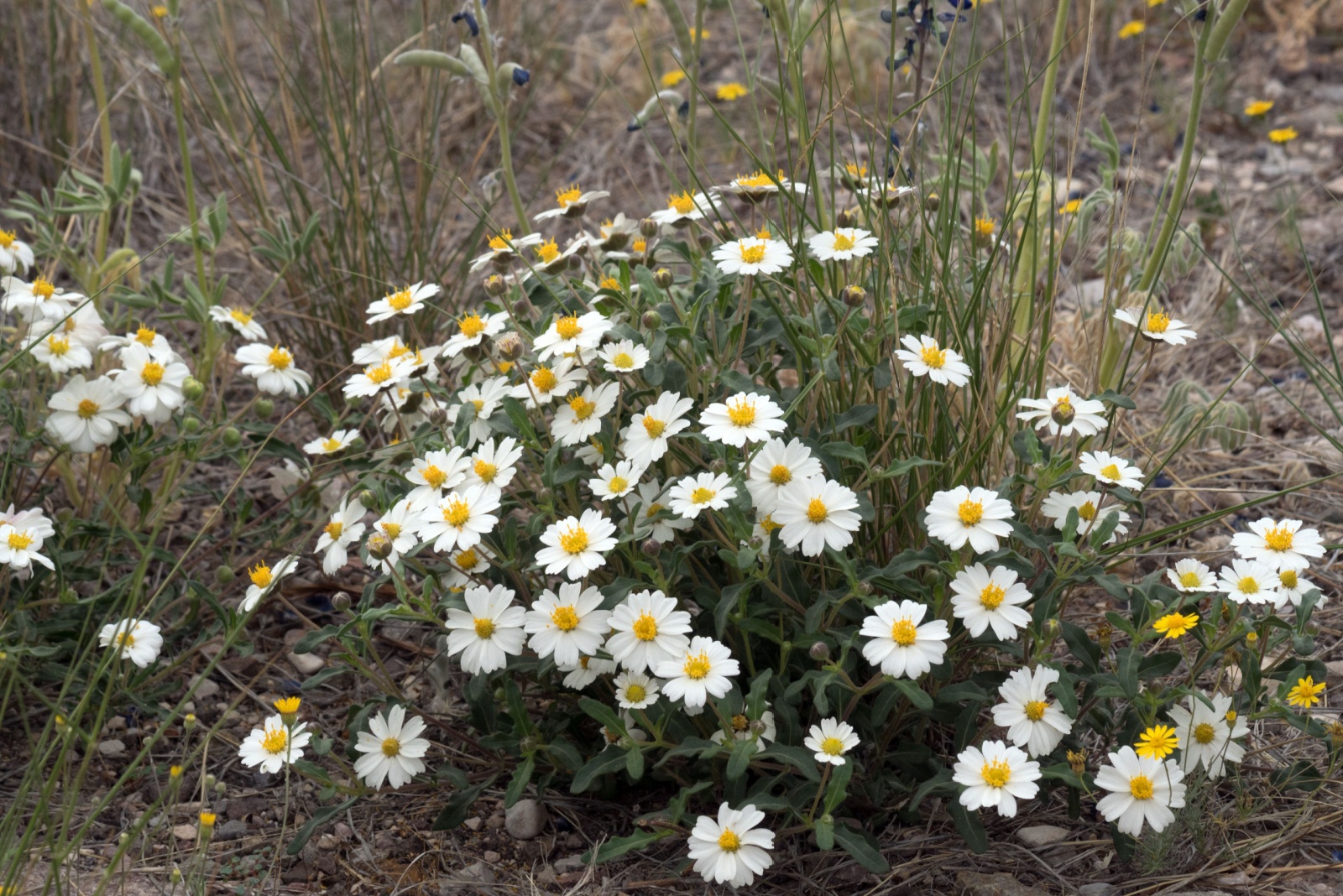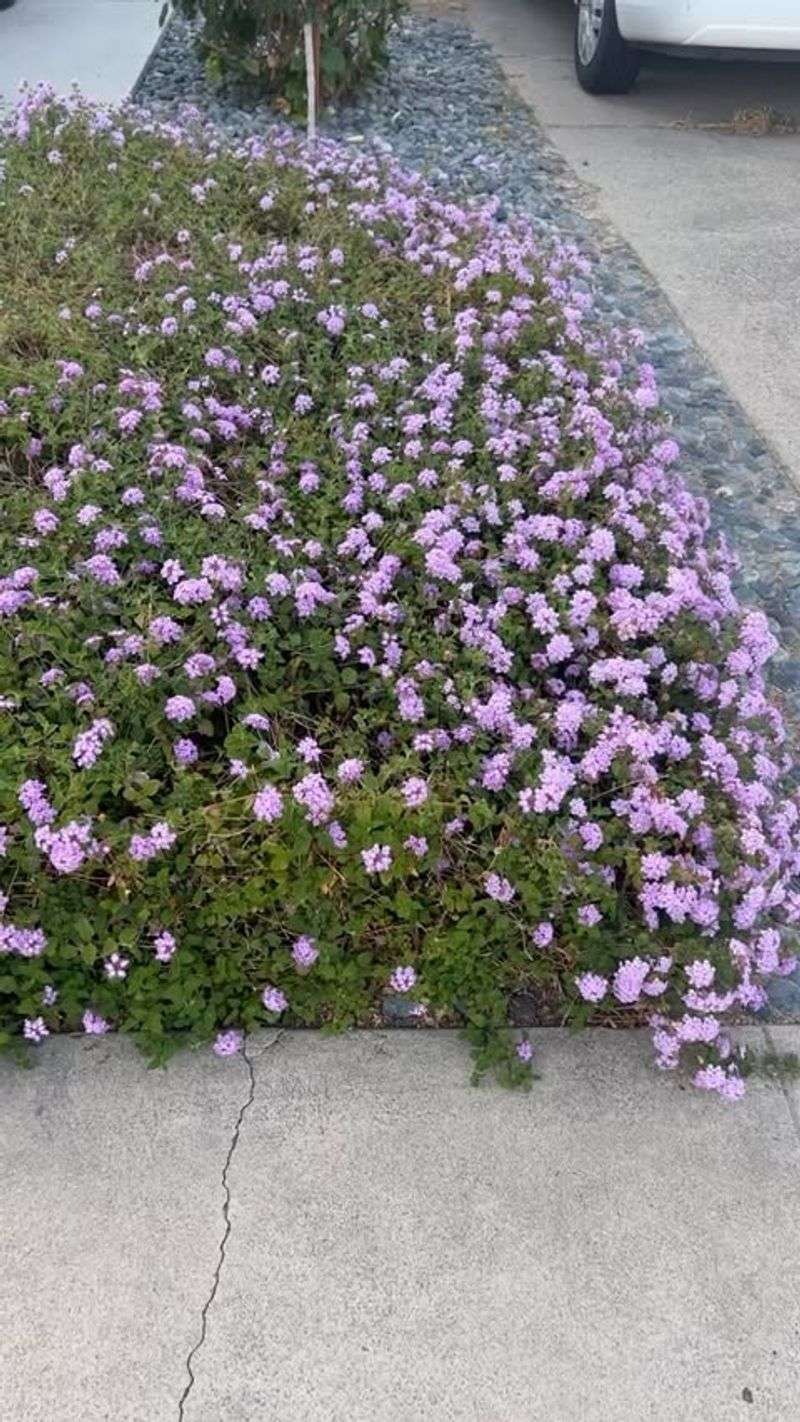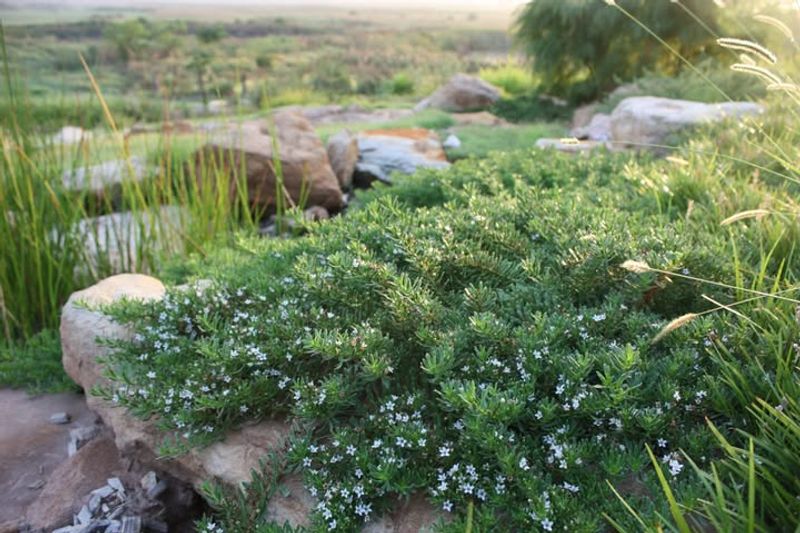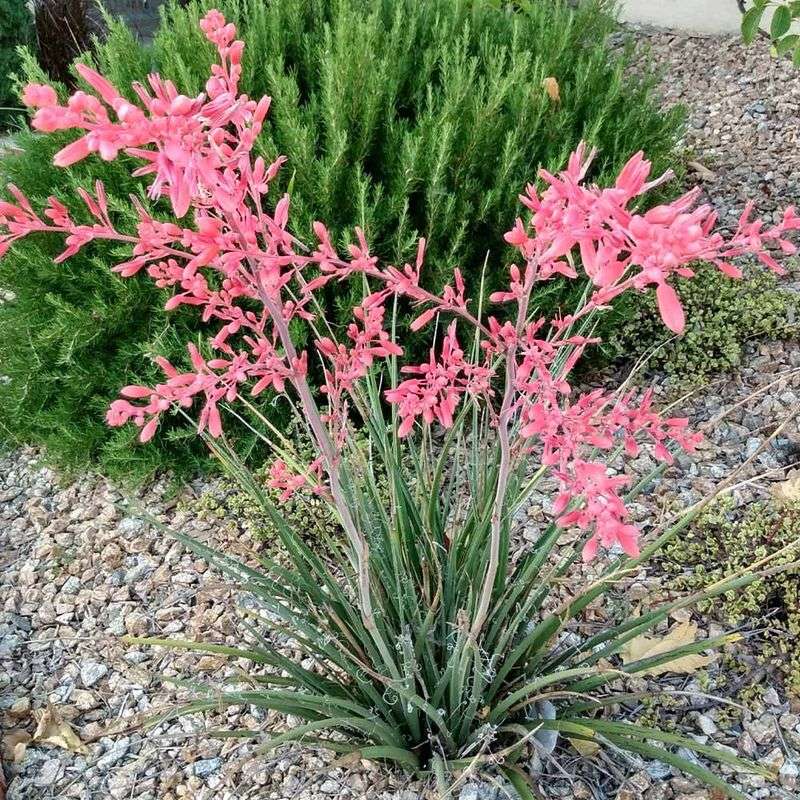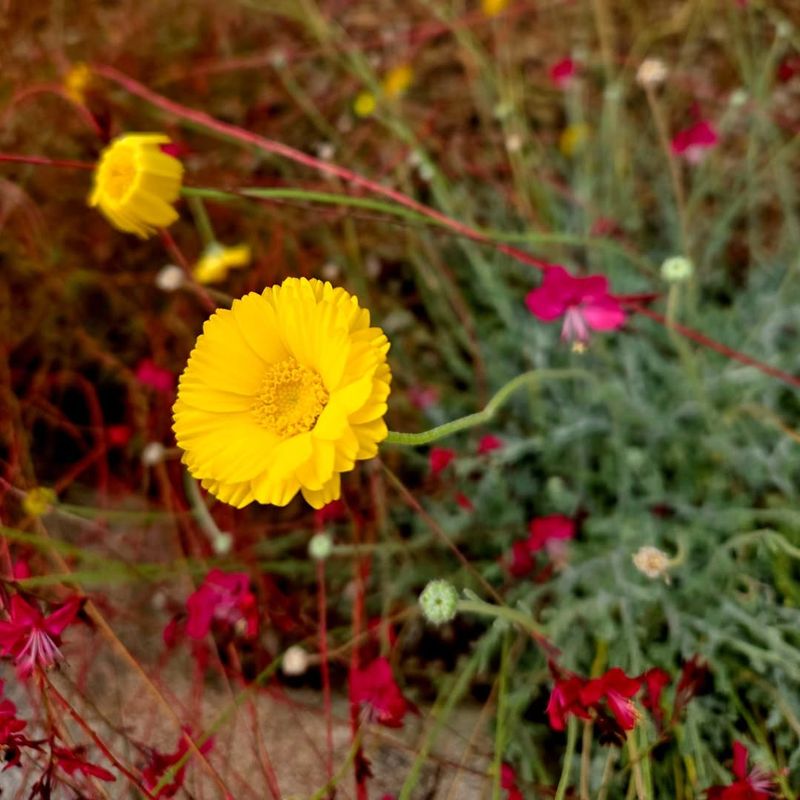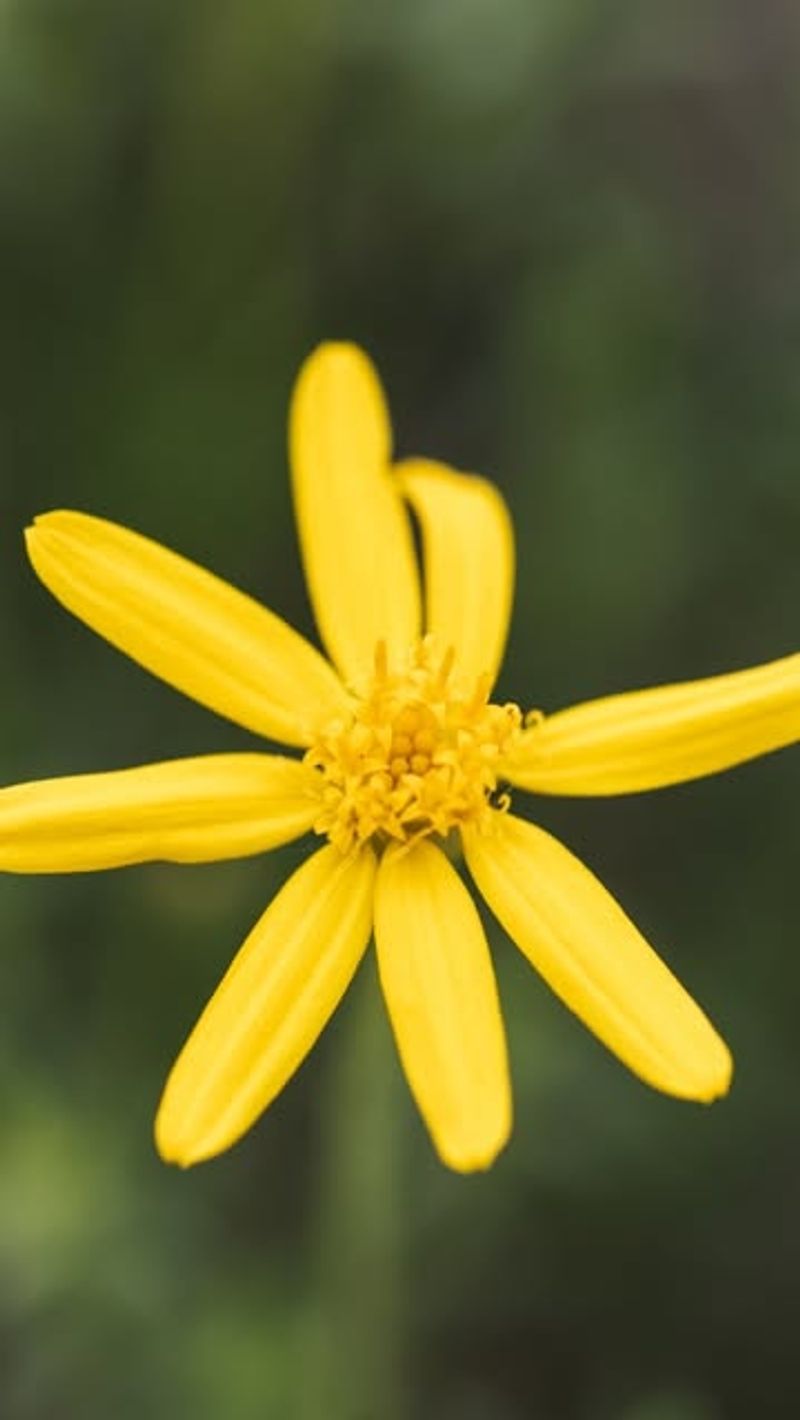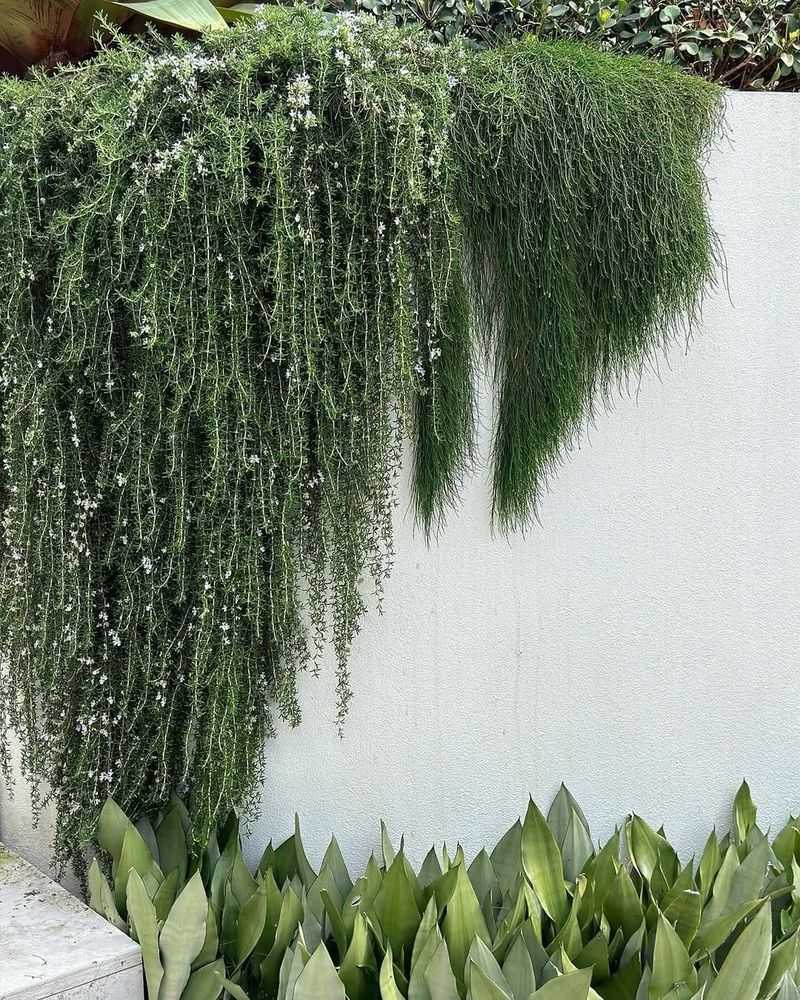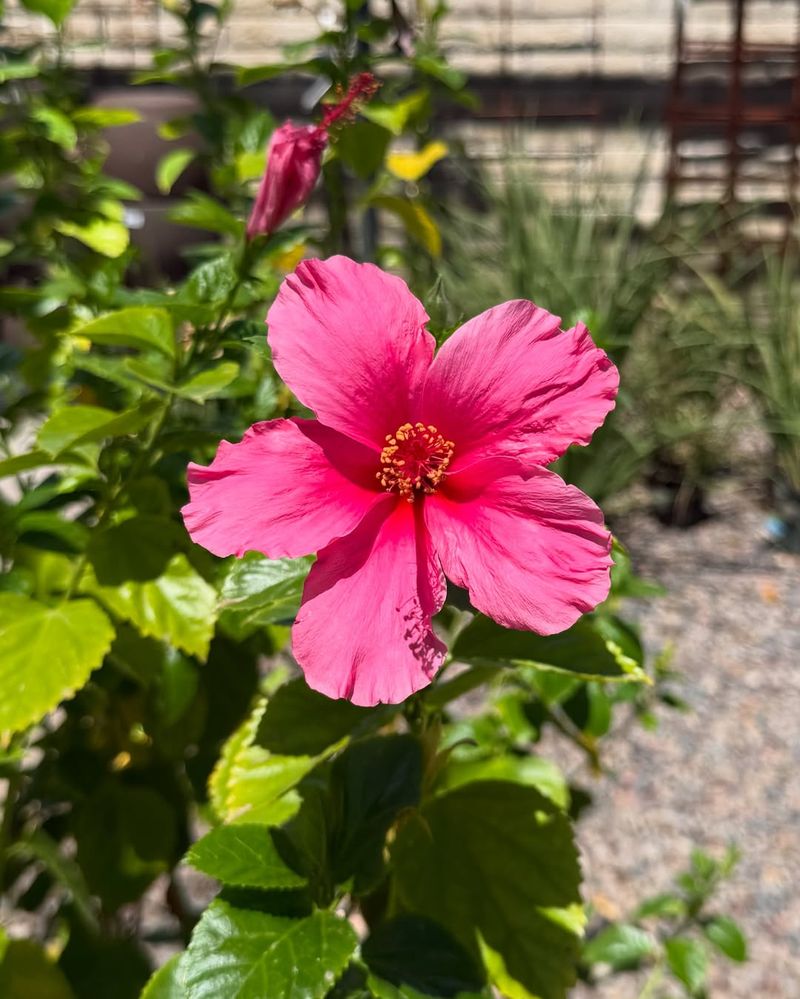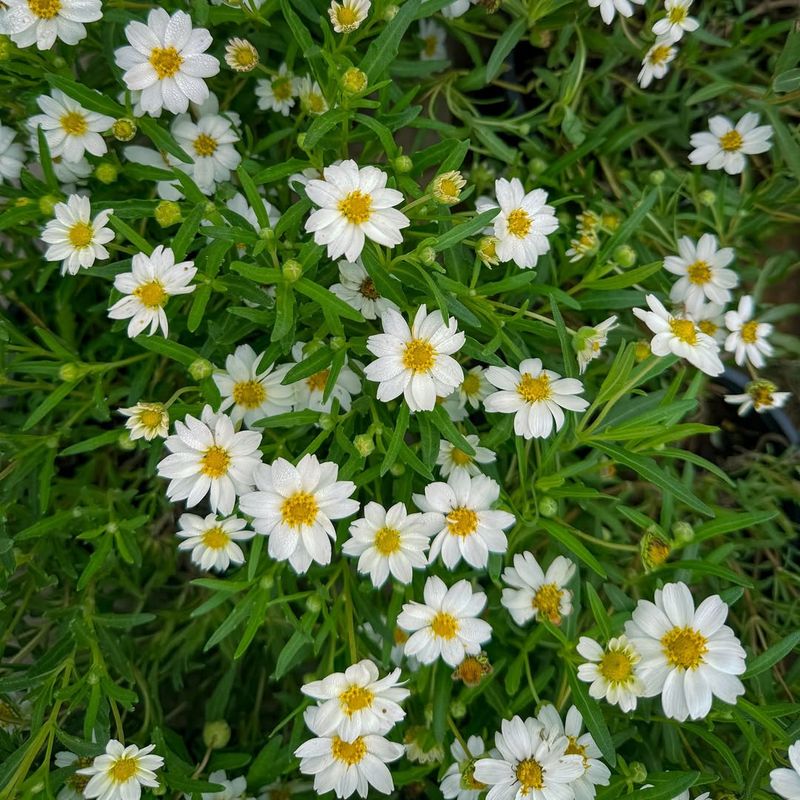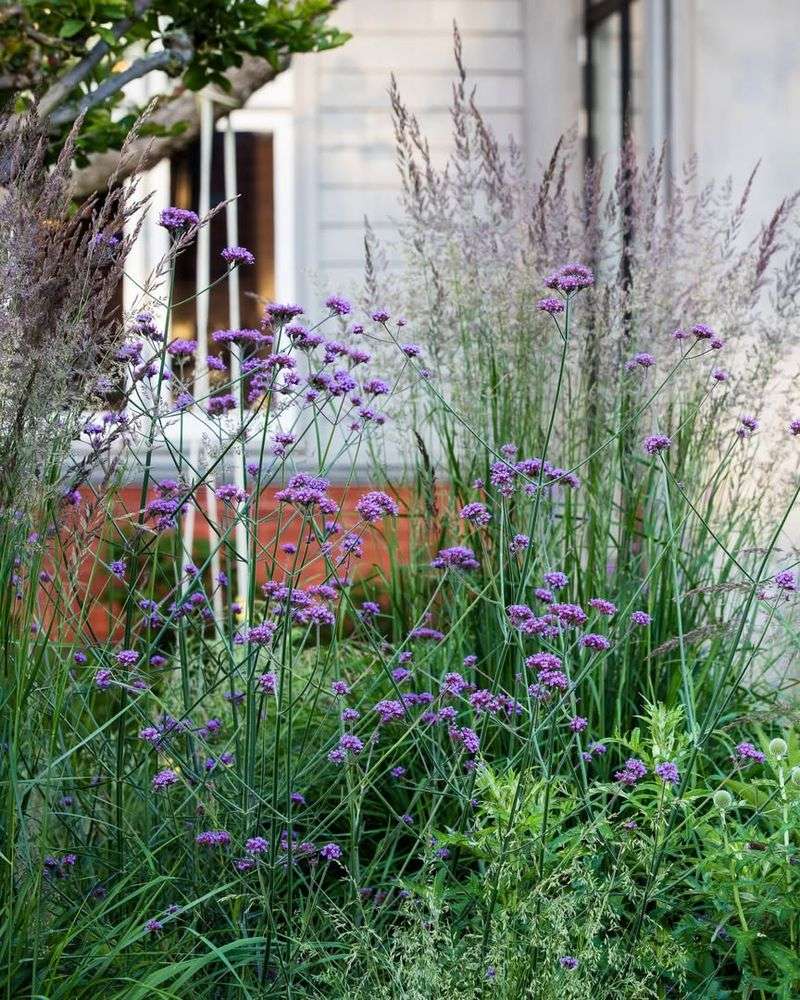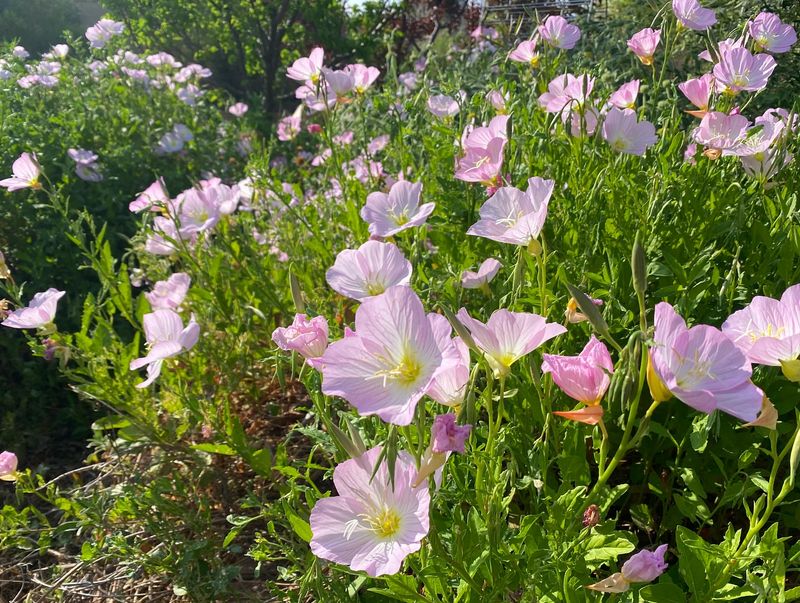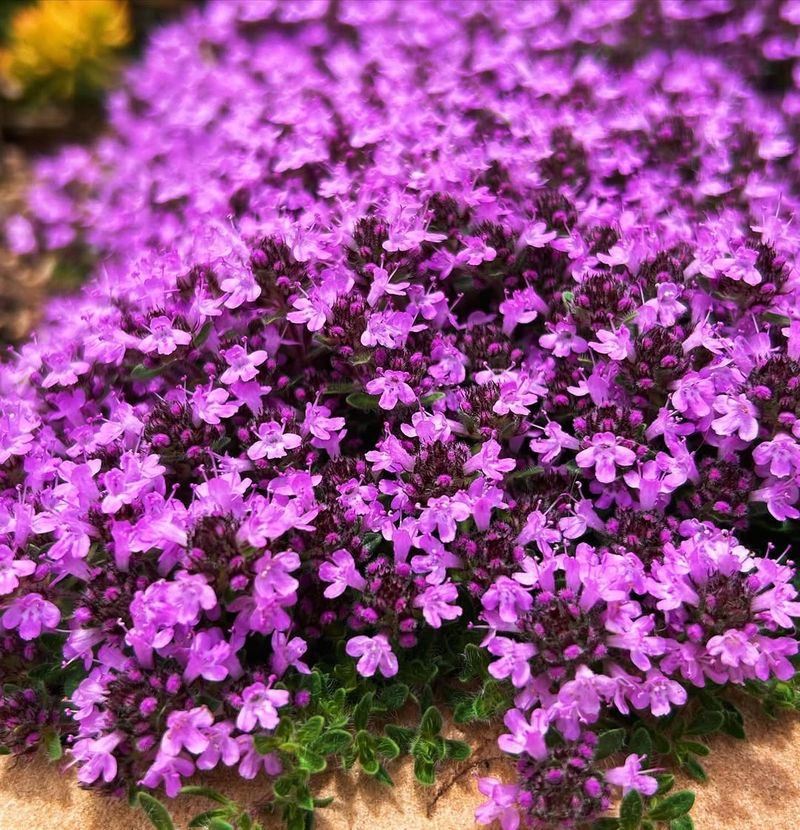Arizona’s intense sun and dry soil can leave your yard looking patchy and bare. Ground covers offer a smart solution that spreads quickly, requires less water than grass, and adds beautiful color to your landscape.
Whether you’re dealing with rocky slopes or shady spots under trees, the right ground cover can transform those empty areas into lush, low-maintenance gardens.
1. Trailing Lantana
Bursting with vibrant purple, yellow, and orange blooms, trailing lantana creates a carpet of color that butterflies absolutely adore. This tough plant laughs in the face of Arizona’s scorching summers and bounces back quickly from occasional frost.
Once established, it spreads rapidly to cover large areas without much help from you. Water it deeply but infrequently, and watch it thrive where other plants struggle.
Trim back overgrown sections in early spring to keep it looking fresh and encourage new growth throughout the season.
2. Myoporum
With tiny white flowers dotting its dense green foliage, myoporum spreads like a living blanket across bare ground. Gardeners appreciate how this Australian native handles Arizona’s temperature swings without complaint.
It grows fast enough to outcompete many weeds, saving you hours of pulling and spraying. The plant stays low to the ground, rarely exceeding six inches in height, making it perfect for slopes and areas where you need erosion control.
Give it occasional deep watering during establishment, then step back and let it work its magic.
3. Red Yucca
Coral-red flower spikes shoot up dramatically from blue-green grass-like leaves, creating stunning vertical interest while covering horizontal space. Despite its name, red yucca isn’t actually a true yucca but shares that same desert toughness.
Hummingbirds flock to the tubular flowers that bloom for months, turning your bare spot into a wildlife haven. The clumping growth habit fills in spaces naturally without becoming invasive or aggressive.
This native Texas plant feels right at home in Arizona’s climate and needs almost no supplemental water once its roots take hold.
4. Desert Marigold
Golden-yellow daisy-like blooms pop up repeatedly throughout the year, bringing sunshine to previously empty patches. Native to the Sonoran Desert, this cheerful plant knows exactly how to handle Arizona’s challenging conditions.
It reseeds itself generously, filling in gaps without any effort on your part. The silvery-green foliage stays attractive even when flowers take a break between bloom cycles.
Desert marigold grows quickly from seed or transplants, establishing a colorful mat that requires minimal water and zero fertilizer to look absolutely fantastic all year long.
5. Damianita
Aromatic foliage releases a pleasant scent when brushed against, while bright yellow flowers create pools of gold across your landscape. This compact shrub stays under a foot tall but spreads nicely to form dense mats.
Deer typically avoid it, making damianita perfect for areas where wildlife browsing causes problems. The evergreen leaves maintain their color through winter, providing year-round visual interest when other plants go dormant.
Plant it in full sun with excellent drainage, and you’ll be rewarded with blooms from spring through fall with very little maintenance required.
6. Prostrate Rosemary
Imagine having a living carpet you can harvest for cooking while it beautifies bare spots. Prostrate rosemary does exactly that, spreading horizontally with fragrant needle-like leaves and delicate blue flowers.
It cascades beautifully over walls and rocks, softening hard landscape edges with its trailing branches. Bees love visiting the blooms in late winter and spring, adding beneficial pollinators to your garden.
This Mediterranean herb adapted perfectly to Arizona’s dry climate and actually prefers neglect over pampering. Just plant it, walk away, and return occasionally to snip fresh rosemary for your kitchen.
7. Angelita Daisy
Rounded mounds of feathery foliage disappear beneath masses of golden-yellow flowers during peak bloom periods. Each plant spreads into a neat dome that touches neighboring plants, creating seamless coverage.
Originally from northern Mexico, angelita daisy feels completely at home in Arizona’s hottest zones. It blooms heaviest in spring and fall but often produces scattered flowers even during summer’s peak heat.
The fine-textured leaves add a soft, delicate appearance that contrasts beautifully with bolder desert plants. Shear plants lightly after major bloom cycles to maintain compact shape and encourage fresh flowering.
8. Blackfoot Daisy
White petals surrounding sunny yellow centers create a classic daisy look that never goes out of style. Blackfoot daisy stays low and spreads steadily, forming patches that brighten rocky or sandy soil.
This Southwest native blooms most heavily in spring but continues producing flowers sporadically through fall and even mild winters. The gray-green foliage provides nice texture when plants aren’t flowering.
It self-seeds moderately, helping fill in gaps naturally without becoming a nuisance. Perfect drainage is essential, so plant it in raised areas or amended soil if your yard tends to hold water.
9. Verbena
Clusters of purple, pink, or red flowers create a stunning tapestry when verbena spreads across bare ground. Butterflies can’t resist the nectar-rich blooms, transforming your empty space into an active wildlife habitat.
Several varieties work well in Arizona, from native desert verbena to cultivated hybrids bred for continuous blooming. The plants grow quickly from small starts, reaching full coverage in just one season with proper establishment care.
Once settled in, they tolerate drought remarkably well and bloom most heavily when temperatures moderate in spring and fall months. Deadheading spent flowers encourages more blooms.
10. Mexican Evening Primrose
Delicate pink papery flowers open in late afternoon, creating a magical evening display across previously barren areas. Mexican evening primrose spreads aggressively through underground runners, making it ideal for large spaces that need quick coverage.
The plant goes dormant in winter but returns vigorously each spring, filling in faster than most competitors. Be warned that its enthusiastic spreading habit requires containment in smaller gardens or near delicate plants.
However, for challenging slopes, parking strips, or expansive bare areas, this tenacious spreader solves coverage problems quickly with minimal water and absolutely no fussing required.
11. Creeping Thyme
Tiny aromatic leaves release wonderful fragrance when stepped on, making creeping thyme perfect for pathways and between pavers. Purple, pink, or white flowers blanket the foliage in spring, attracting beneficial insects.
This Mediterranean herb adapted surprisingly well to Arizona’s climate when given afternoon shade in the hottest zones. It stays extremely low, creating a dense mat that suppresses weeds effectively. Different varieties offer varying flower colors and growth habits, letting you customize your coverage.
Plant it where you’ll brush against it occasionally to enjoy the pleasant herbal scent that makes this ground cover truly special.

